Product Information Kakegawa Sannen-bancha (three-year aged bancha)
Overview:
The sannen-bancha (三年番茶) which CHAMART introduces is made from aracha (unrefined tea leaves) of stems of fukamushicha (deep-steamed green tea) which was stored in the fridge for three years to ripen and improve the richness and mellowness of its flavor. Then, the leaves were roasted by a roasted machine with natural sands at around 180 to 220℃ for about 20 seconds.
The flavor of sannen-bancha is similar to hojicha, but it is different from hojicha. Sannen-bancha has a mild roasted flavor with a subtle acidity. The roasted flavor is not strong like hojicha.
The tea leaves and stems are stored and matured for three years, which reduces stimulatory components such as caffeine or tannins and makes a mellow flavor.
Sannen-bancha can be compared to a fine aged wine, and is especially enjoyable served in a wine glass.
The sannen-bancha is single origin and certified as JAS Organic and is produced in Kakegawa City, Shizuoka Prefecture.
The tea leaves of sannen-bancha are cultivated by the Chagusaba farming method which was recognized as a Globally Important Agricultural Heritage System (GIAHS) by the United Nations in 2013.*
This sannen-bancha is eco-friendly tea and CHAMART calls the sannen-bancha “CHAGUSABA tea”.
CHAMART introduces 1 grade (3B1) of Sannen-bancha. The variety of sannen-bancha is Yabukita
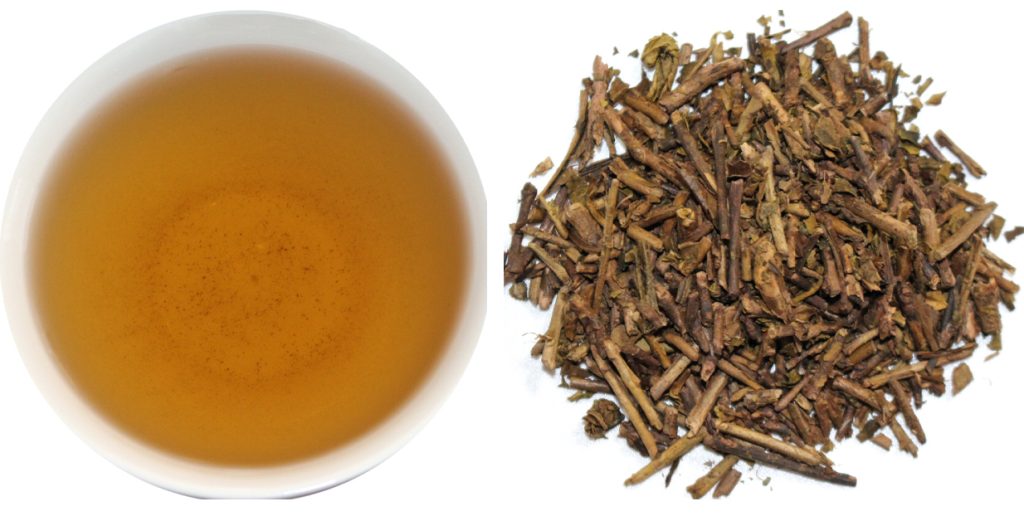
Sannen-bancha 3B1
Green tea
Type of tea: Sannen-bancha (three-year aged bancha)
Place of production: Kakegawa City, Shizuoka Prefecture, Japan
Leaf: Stem with leaf, roasted and slightly hard
Color of brewed tea: Dark brown
Flavor: Mild roasted and bitter with a slight acid taste
Best-before date: 1 year after the shipping date or 2 years after the shipping date if stored under 9 ℃ in the refrigerator
Organic farming (certified Organic JAS) *: ◯
Certification body: Japan Organic & Natural Foods Association (JONA)
Price: Please contact us
MOQ (Minimum Order Quantity): 10kg x 2 boxes
Net weight: 10kg/1 package (box) x 2 boxes
Gross weight: 12kg/1 package (box) x 2 boxes
Cardboard box size of 1 box: 480mm × 340mm × 400mm (2kg)
Inner package: Aluminum-metallized film kraft bag 470mm × 320mm × 775mm (the part of 775mm will be folded)
Outer box: Cardboard box
Storage condition: Store in a cool, dark and dry place. Avoid storing in places with high temperatures and humidity, and keep out of direct sunlight or light.
CHAGUSABA farming method *: ◯
The tea is cultivated using the CHAGUSABA farming method in Globally Important Agricultural Heritage Systems (GIAHS) recognized areas.
*The CHAGUSABA farming method is NOT an organic farming method.
Please click here for the details of 1, 2 and 3.
1. Organic JAS (Japanese Agricultural Standard)
2. EU Maximum Residue Level (MRL) of Pesticide
3. Examination of Radioactive materials in tea cultivated in Shizuoka Prefecture
Variety: Yabukita
Yabukita is the most popular variety of tea plant in Japan. Yabukita is a well-balanced variety, with a high yield and has a strong umami flavor. Yabukita is suitable for any kind of green tea.

Producers of tea:
A family-run tea garden that manages the production of tea from cultivation through processing. The tea farmer’s teas have received awards at multiple national and international tea contests.
The philosophy of the tea farmers is respect for nature and cultivating tea. They do not want to destroy the ecosystem using agricultural chemicals. Thus, they don’t use any chemicals for their tea cultivation.
They mix Chagusa (grasses around the tea fields) and rice bran with soil and ferment them to make nutrient rich soil. Microscopic organisms work in the mixture and it becomes organic compost. The soil is put into their tea fields.
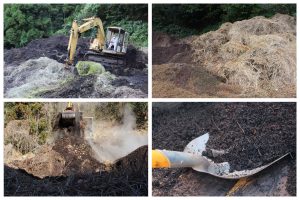
Making nutrient rich soil with CHAGUSA and rice bran
The photos were taken between August 2022 to January 2023

Putting the soil into the tea field (January 2023)
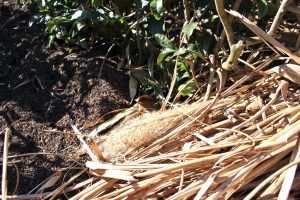
Tea field with the soil and Chagusa (January 2023)
Factory processing:
Cooling organic fresh tea leaves in a container → Steaming fresh leaves at around 100℃ by machine (蒸熱 Jonetsu) → Scattering and drying of tea leaves (葉打ち Hauchi) → Primary rolling and drying of tea leaves by machine (粗揉 soju) → Rolling tea leaves by machine (揉捻 Junen) → Secondary rolling and drying of tea leaves (中揉 chujo) → Final rolling of tea leaves by machine (精揉 seiju) → Sieving tea leaves by machine (篩い分け Furuiwake) → Firing and refining tea leaves by machine (火入れ hiire) → Drying tea leaves by machine (乾燥) → Sieving tea leaves by machine (篩い分け Furuiwake) → Storing the tea leaves in the refrigerator for 3 years → Roasting the tea leaves at around 180 to 220℃ for about 20 seconds with natural sands by machine (焙じ) → Inspecting, measuring, packing and shipping
Production place: Kakegawa City, Shizuoka, Japan
Shizuoka Prefecture is a major tea production area of Japan, located in the center of the main island of Japan. Shizuoka Prefecture has a warm climate with many rivers and is often foggy. These conditions are suitable for tea cultivation.
Kakegawa City is one of the major tea production cities in Shizuoka Prefecture and is especially famous for fukamushicha. There is Mt. Awagatake with Chamonji (茶文字). The letter “茶” (tea) has been created by planting 1,000 Hinoki trees (Japanese cypress) on the slope of Mt. Awagatake. The dimensions of the letter “茶” (TEA) are about 130 x 130 meters. It is a symbol of Kakegawa City. The Chamonji was created with pine trees for advertising tea in 1932 first, but the trees were blighted by pine weevils. Then, the Chamonji was created with 1,000 Hinoki trees again in 1985.
There are many facilities related to tea such as tea museums, a tea-themed hotel, etc. in Shizuoka Prefecture.


Chamonji on Mt. Awagatake in Kakegawa City
How to use sannen-bancha:
Sannen-bancha leaf can be used for various purposes not only for drinking, but also for French onion soup, etc.
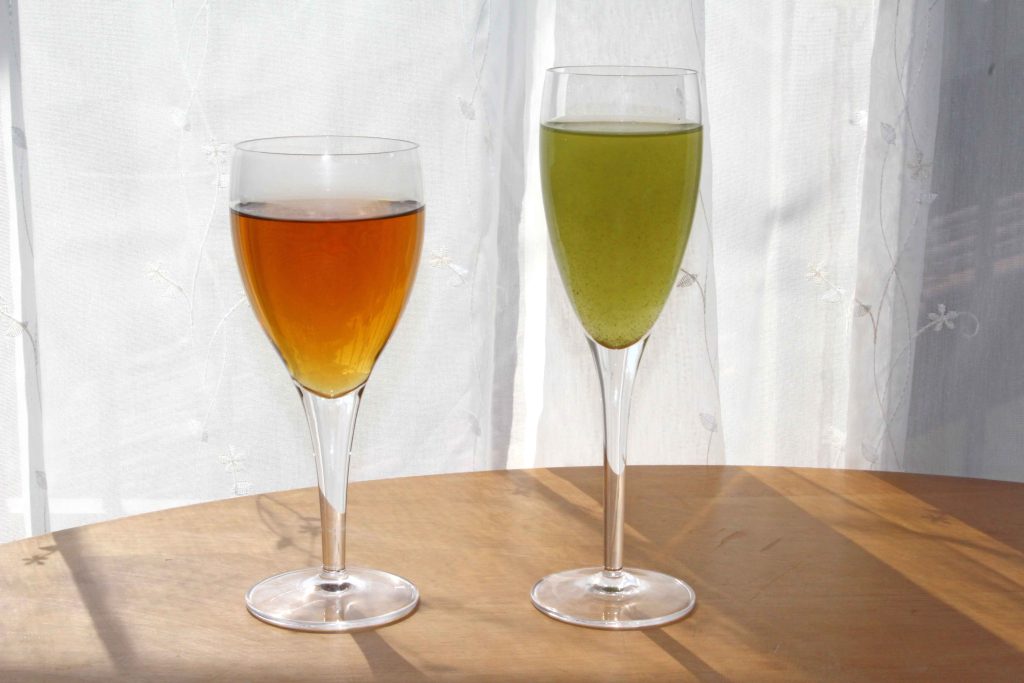
Left: Three-year aged bancha, right: Fukamushicha

French onion soup using Three-year aged bancha
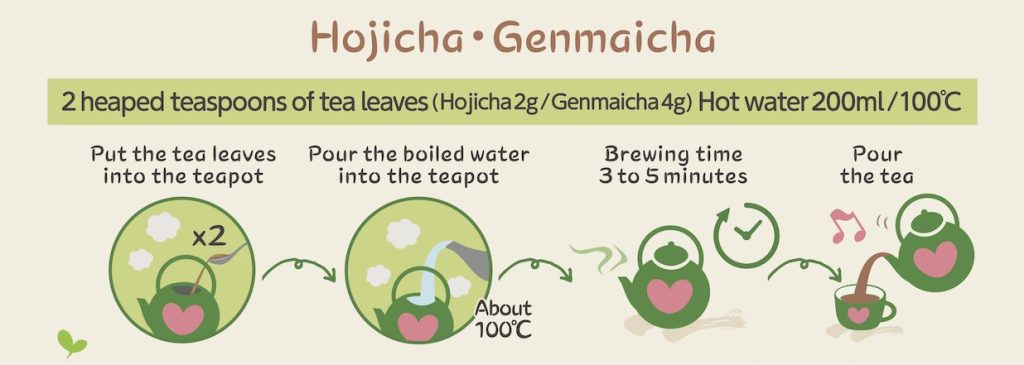
*Shizuoka’s Chagusaba farming method (Traditional Tea-grass Integrated System in Shizuoka)
静冈的茶草场农耕法/靜岡的茶草場耕法
The Chagusaba farming method is a farming method traditionally practiced in Shizuoka Prefecture using grass mulch. It is an example of circular agriculture that harmonizes humans’ relationship with nature to preserve the environment and protect biodiversity.
Shizuoka’s Chagusaba farming method, which is conducted in 4 cities and 1 town including Kakegawa City, has been recognized as a Globally Important Agricultural Heritage System (GIAHS) by the Food and Agriculture Organization of the United Nations (FAO) in 2013.*
Cha (茶) means tea, Gusa/Kusa (草) means grass, and Ba (場) means place. Chagusaba (茶草場) refers to the semi-natural grasslands around tea fields. The Chagusaba farming method makes use of natural resources by cutting pampas or bamboo grasses that grow around the tea fields and laying them in the furrows between the tea fields. These grasses used in the tea fields are called Chagusa (茶草).
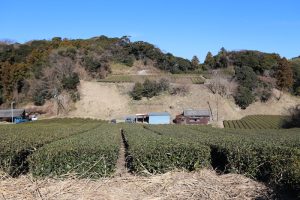
Chagusaba and tea field with Chagusa (January 2023)
The grasses laid in the furrows are fluffy and look like a Japanese futon (like a duvet). The Chagusa gradually breaks down to become compost. In addition, the laying of Chagusa makes it difficult for weeds to grow, and prevents moisture evaporation and the soil from being displaced by rainwater.
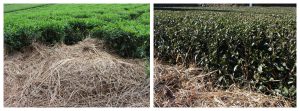
Tea fields with Chagusa
Left October 2022, Right January 2023
Maintain the environment and biodiversity
Tea farmers cut pampas or bamboo grasses in autumn and winter, dry them and cut them into smaller pieces. During the winter, tea farmers put the Chagusa into the tea fields. By cutting the tall pampas or bamboo grasses around the tea fields, small animals and plants are given access to sunlight, allowing them to thrive.
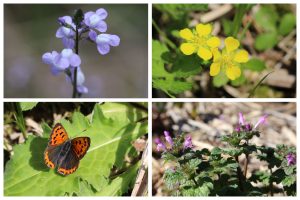
Small flora and fauna around the tea fields
Drink LEAF TEA and Protect Nature
Grass mulch farming was once conducted all over Japan before. However, it is a burden on tea farmers and the market price of leaf tea isn’t stable today. Thus, the number of tea farmers who conduct grass mulch methods has been decreasing.
You can support the tea farmers by purchasing and drinking the tea cultivated by the Chagusaba farming method. Consequently, you will contribute to maintaining the environment and biodiversity.
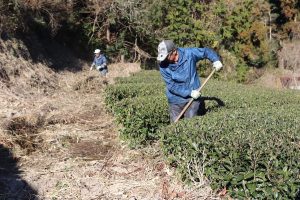
Farmers are placing Chagusa (茶草) in the tea fields
For more information on the Chagusaba farming method, please see the link below.
https://chamart.jp/en/archives/learn_heritage/shizuoka_chagusaba/
FAO, GIAHS Globally Important Agricultural Heritage System, Traditional Tea-grass Integrated System in Shizuoka
https://www.fao.org/giahs/giahsaroundtheworld/designated-sites/asia-and-the-pacific/traditional-tea-grass-integrated-system-in-shizuoka/en/
*Globally Important Agricultural Heritage Systems (GIAHS)
全球重要农业文化遗产/全球重要農業文化遺產
Systèmes Ingénieux du Patrimoine Agricole Mondial (SIPAM)
GIAHS are traditional agroecosystems made up of communities that have lived in an intricate relationship with their territory across generations while adapting to changes in society and the environment. They are recognized by the Food and Agriculture Organization of the United Nations (FAO). Additionally, the systems are resilient, characterized by remarkable agrobiodiversity, traditional knowledge, invaluable cultures and landscapes, sustainably managed by farmers, herders, fisherfolk, and forest people in ways that contribute to their livelihoods and food security.
FAO has designated a GIAHS related to tea in 3 sites in China, 1 site in Japan and 1 site in South Korea.
*Tea leaves contain caffeine. The diuretic, stimulant and anticancer effects of caffeine intake are clinically recognized. On the other hand, excessive intake of caffeine may have a damaging effect on health. Especially, pregnant or breastfeeding women, and children should be careful with the amount of caffeine they intake.


 Reference:
Reference:
The Food and Agriculture Organization (FAO), GIAHS Globally Important Agricultural Heritage System
http://www.fao.org/giahs/en/
联合国粮食及农业组织 全球重要农业文化遗产
https://www.fao.org/giahs/zh/
Systèmes Ingénieux du Patrimoine Agricole Mondial (SIPAM)
https://www.fao.org/giahs/fr/
FAO, GIAHS Globally Important Agricultural Heritage System, Traditional Tea-grass Integrated System in Shizuoka
https://www.fao.org/giahs/giahsaroundtheworld/designated-sites/asia-and-the-pacific/traditional-tea-grass-integrated-system-in-shizuoka/en/
Chagusaba in Shizuoka
http://www.chagusaba.jp/english/index.html
文部科学省
Ministry of Education, Culture, Sports, Science and Technology.
日本食品標準成分表2020年版(八訂)全体版
https://www.mext.go.jp/a_menu/syokuhinseibun/mext_01110.html
公益社団法人静岡県茶業会議所 (2019) 新版 茶の品種
